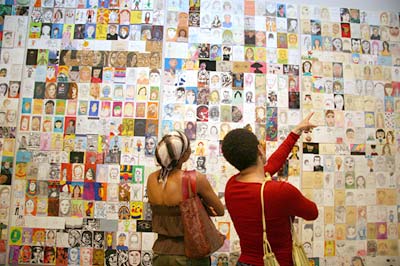Bill Stumpf, a designer and author of one of my favorite books, says:
Sometimes I think we’ve become a nation of renters, here for the short term, whether here is a place of residence, a stock portfolio, or a political position. We have lost a sense of proprietorship and the sense of community that tags along behind ownership. If we aren’t the proprietors of our civilization, who is?
(From The Ice Palace That Melted Away, page 94)
To be a proprietor means to own a thing, like a business, a property. How do we do that with civilization? Being a “proprietor of our civilization” means to own our past and the baggage that comes with it. To own the ideas, the history, the people, the place or thing that represents it. Including, sometimes, sorrow and regret. Including people whose ideas we disagree with.
The Vietnam Veterans Memorial wall changed how we own our history. It helped us acknowledge the darker side of our past with honesty and come to treat it with respect. The wall made it possible to own our imperfect civilization without glorifying it. It also, for the first time, gave people permission to create very personal memorials with letters and flowers and medals. It has such emotional weight and healing powers that replicas of the wall travel across the country. Here is a great podcast about creating the Vietnam Veterans Memorial, and about the power of place.
In an effort to own our past, we are trying to do more to own the darkest parts of our history.
· Richmond, Virginia is looking for ways to honor the history of an old slave market while revitalizing its neighborhood.
· Museums, most often the keepers of our history and our most powerful symbols, are doing more to acknowledge and correct historical deficiencies. Historic homes more frequently represent enslaved residents as well as white owners.
· Flags and memorials to the south’s Confederate past were removed in the wake of last summer’s racially-motivated murders in Charleston, and some are going to museums. Here and here are examples of news coverage from the south.
· Georgetown University is trying to make amends for slaves it owned and sold to balance the budget. Its president has met with descendants of the Georgetown slaves, he’s created an African American Studies program, and is working with stakeholders to consider other options.
· Princeton students continue to protest in favor of erasing history by changing the name of the university’s Woodrow Wilson School of Public Policy and a building named for Wilson (here and here), a racist by current standards, and creator of the League of Nations.
Why don’t we just throw all this ugly stuff in the dumpster instead of a museum and move on, as the Princeton students wish to do? Because changing the name doesn’t change the idea. It’s choosing not to own history, to sweep it under the rug, to hide the truth. Taken to extremes, do we then change everything named for Jefferson and Washington, hide the Constitution in a filing cabinet, and teach only pleasant, non-controversial history? (Is there any such thing?) Should places still be named for Stonewall Jackson if his statue is coming down? Slave owners who were founding fathers are ok, but not Confederate generals? Where do we draw the line between appropriate and extreme change? I don’t have the answer.
It's easier to be a proprietor of history with a physical representation – a thing to own, not just an idea. History gives meaning to place. History lives at your childhood home and in the White House. Memory lives in the 9/11 memorial plaza and roadside crosses and stuffed animals at the Pulse nightclub and medals at the Vietnam wall. Places have power. When history or memory is attached to a place, and we preserve that place or a symbol of it, we claim it. That’s why we have statutes and flags and historic buildings, and our high school yearbooks and our Rosebuds. History is personal.
By remembering, we are the proprietors of our civilization. We can preserve our past in a building name or a flag in a museum, and still understand that this is not our present. We don’t have to regard museums and buildings as graveyards reserved for dead white guys and symbols of the past. Take the past and use it to interpret the present, to connect the dots. Like putting a Confederate flag in a museum, use Woodrow Wilson as an opportunity to teach how human thought evolves over time. How we are still trying to understand each other and how we need to not just tolerate difference, but to embrace it and learn from it.
Only when we are keepers of our entire history can we learn from it. The fabric of a place has woven into it a past. And though a place can't hold all the love and all the grief and all the sorrow, Charleston and the Vietnam wall and Georgetown give us a common space to heal. We have a responsibility to acknowledge all our history and represent it with truth and integrity. Ordinary virtues demand it.
Thanks to Reidar Sandell for conversations and suggestions that helped shape this post. And thank you, as always, for reading.
#ordinaryvirtues #billstumpf



























































